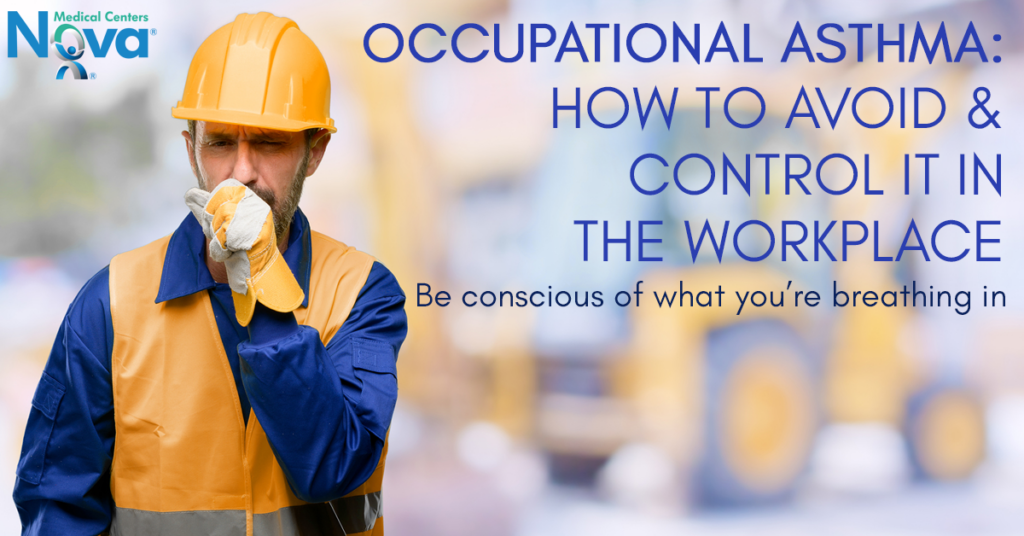
According to John Hopkins Medicine, approximately 10 to 25% of adults with asthma experience occupational asthma. Occupational asthma is a lung disorder in which substances found in the workplace cause the airways of the lungs to swell and narrow. If you have asthma or have a family history of asthma, it is more likely you will develop or worsen your symptoms of occupational asthma. However, even if you do not have a predisposition for asthma, being continuously exposed to triggers can put you at risk for developing occupational asthma.
Who is at risk?
Some occupations are known for being associated with occupational asthma and should take precautions while on the job. Examples of occupations having a higher risk of asthma are:
- People with allergies
- Bakers and food production workers
- Health care providers
- Animal handlers and veterinarians
Symptoms and Signs of Occupational Asthmas
Symptoms may start as soon as you are exposed to the asthma-inducing agent, although some people may not show signs of symptoms until hours after being exposed. Occupational asthma symptoms may get worse with time so look out for:
- Wheezing, sometimes just at night
- Coughing
- Shortness of breath
- Chest tightness
Other possible accompanying signs and symptoms may include:
- Runny nose
- Nasal congestion
- Eye irritation and tearing
Triggers Causing Occupational Asthma
An estimated 11 million workers in a wide range of industries and occupations are potentially exposed to at least one of the more than 200 agents known to be associated with the development of occupational asthma. The documented agents that have been associated with occupational asthma include:
- Chemical dust and vapors
- Animal substances
- Plant substances including latex, flour cereals, cotton, flax, and wheat
- Metals particularly platinum, chromium, and nickel sulfate.
- Respiratory irritants, such as chlorine gas, sulfur dioxide, and smoke.
Preventing Occupational Asthma
Occupational asthma can be prevented by monitoring the levels of exposure to agents in the workplace continuously and removing employees from direct contact when symptoms arise. Employers can take precautionary measures such as:
- Implementing better control methods
- Using less harmful substances
- Providing personal protective equipment
Personal steps you can take:
- Smokers are advised to quit smoking as this will help prevent occupational asthma
- Flu vaccinations to help prevent illnesses
- Have regular medical checkups to identify possible signs
Treatments for Occupational Asthma
The best treatment for occupational asthma is avoiding exposure to the triggers causing your asthma. However, once you become sensitive to a substance, tiny amounts may trigger asthma symptoms, even if you wear a mask or respirator. If the occupational asthma advances, treatments may include:
- Medications
- Physical Therapy
- Breathing Aids
- Finding a more suitable workplace
There are numerous substances used in various industries that can trigger occupational asthma in anyone. By taking precautions in the workplace and maintaining a healthy lifestyle, occupational asthma can be avoided. Being informed of the risks in your job and taking preventions should alleviate the worry of developing asthma and provide you with a breath of fresh air.



